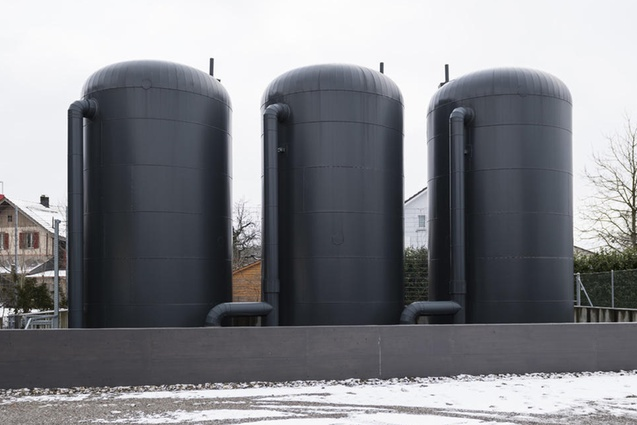The methanation gas containers at Regio Energie Solothurn (Keystone) Flatulent bacteria, electric vehicles and a supply network for greenhouses are among the winners of this year’s Watt d’Or competitionexternal link organised by the Federal Office of Energy. “What is the link between flatulence and renewable energy?” the energy office asked. “The answer is Archie, the farting archaeobacteria.” Archie picked up the award in the “renewable energy” category, presented in Bern on Thursday, for ingesting hydrogen and CO2 and converting them into biomethane, which is then fed into the natural gas grid. This biological methanation takes place in the Regio Energie Solothurnexternal link hybrid plant. The greenhouse of Meyer Orchideenexternal link in Wangen, canton Zurich,
Topics:
Swissinfo considers the following as important: 3.) Swiss Info, 3) Swiss Markets and News, Featured, Federal Office of Energy, newsletter, Sci & Tech, Sci & Tech
This could be interesting, too:
Nachrichten Ticker - www.finanzen.ch writes Die Performance der Kryptowährungen in KW 9: Das hat sich bei Bitcoin, Ether & Co. getan
Nachrichten Ticker - www.finanzen.ch writes Wer verbirgt sich hinter der Ethereum-Technologie?
Martin Hartmann writes Eine Analyse nach den Lehren von Milton Friedman
Marc Chandler writes March 2025 Monthly

The methanation gas containers at Regio Energie Solothurn (Keystone)
Flatulent bacteria, electric vehicles and a supply network for greenhouses are among the winners of this year’s Watt d’Or competitionexternal link organised by the Federal Office of Energy.
“What is the link between flatulence and renewable energy?” the energy office asked. “The answer is Archie, the farting archaeobacteria.”
Archie picked up the award in the “renewable energy” category, presented in Bern on Thursday, for ingesting hydrogen and CO2 and converting them into biomethane, which is then fed into the natural gas grid. This biological methanation takes place in the Regio Energie Solothurnexternal link hybrid plant.
The greenhouse of Meyer Orchideenexternal link in Wangen, canton Zurich, was awarded the prize in the “energy technologies” category for growing orchids in a climate-neutral way.
Energy-efficient
In the category of “energy-efficient mobility”, the joint winners are the electric municipal vehicles developed by the Swiss family company Viktor Meiliexternal link in Schübelbach, canton Schwyz.
“They are at least as powerful as their diesel equivalents and have a long period of use per battery charge,” the Federal Office of Energy said. “They are also very quiet, emit no CO2 and save around CHF100,000 ($103,000) in fuel and maintenance costs over their lifetime.”
In the same category, the Designwerkexternal link company in Winterthur, canton Zurich, developed the 26-tonne Futuricum Collect 26E electric rubbish truck, which is “twice as expensive to buy as diesel models but whose operating costs are around 80% lower”.
The energy network on the ETH Hönggerberg campusexternal link of the federal technology institute ETH Zurich, which accommodates more than 12,000 people every day, won the award in the “buildings and space category”.
Since 2012 the campus, which consumes as much energy as a small town, has been supplied with renewable heat by several probe fields located 200 metres below ground. Waste heat is stored in these fields in summer and can be used for heating in winter.
A total of 45 projects had entered the race for the Watt d’Or 2020. These were evaluated by a committee of experts who selected 19 of them for the final round.
Tags: Featured,Federal Office of Energy,newsletter,Sci & Tech
